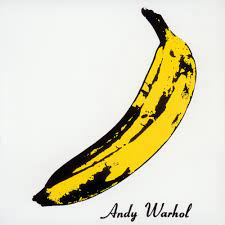- Gary Giddens, Satchmo, Anchor Books, 1988
Garry Giddens's critical biography of Louis Armstrong, is slim at 238 pages, but it remains my favorite Armstrong reference ever since it appeared thirty-five years ago. The book is scholarly, authoritative and still up-to-date after more than thirty years. Drawn from primary sources, including Armstrong's baptismal certificate, news articles, and Armstrong's own writings, Giddins disputes many common assumptions (such as Armstrong's having the middle name Daniel, though even Wikipedia still says otherwise). Most importantly, Giddins approaches his subject by challenging the prevailing notion that Armstrong's greatest works were all recorded before 1930, and that he "sold out" for the rest of his long career.
The author's approach is to divide the book into two parts: "The Artist As Entertainer" "The Entertainer As Artist." Within each sections he provides necessary details to make his case. At the start Giddins investigates documents concerning Armstrong's true date of birth. He follows his subject's early years in New Orleans: how a Jewish family from which he had a job took him under its wing; Armstrong's brief residency in the New Orleans Colored Waifs' Home, for which he received his first cornet; his early musical training and jobs and his first, short-lived marriage.
We learn of his apprenticeship on the Mississippi riverboat band led by Fate Marable, then on to Chicago in 1923 to join King Oliver's Creole Jazz Band (Armstrong had played previously in Oliver's band in New Orleans.). Oliver's band with Armstrong made their first recordings for the Okeh and Gennett labels the same year.
King Oliver's Creole Jazz Band
Fletcher Henderson, seated at piano.
In 1924 Louis Armstrong joined the famous orchestra of Fletcher Henderson, playing alongside Coleman Hawkins and recording often, thereby broadening his influence and building his reputation as a popular artist. He returned to Chicago to play in Erskine Tate's band at the Vendome theater on State Street, along the "Stroll," as it was then known, on the South Side. Armstrong made a pair of recordings as a sideman for Tate, as well as for Carroll Dickerson at the Sunset Cafe. From the 1920s through the 1940s, he became an icon nationally and internationally, regarded as a great American creator, along with the likes of Charlie Chaplin and Walt Disney.
Almost all dismissive criticism of Armstrong, beginning in the late '40s, is directed at the small-groups with Louis and his All-Stars and the end. The critics carped at Armstrong's sidemen, asserting their inferiority beside the Hot Five recordings. The enormous, chart-topping success of "Hello Dolly" seemed to anger them.
Such a viewpoint stems from the assumption that Armstrong, after his pioneering records of the 1920s, began his decline only a decade after he left New Orleans. The unspoken assumption that Armstrong "sold out" in some way to become an international success with millions of admirers.
Gary Giddens begins his book with a discussion of the assumed dichotomy between art and entertainment. Satchmo continues by arguing persuasively in favor of Armstrong's professional career, from beginning to end.
"Struttin' With Some Barbecue"
Not least of this book's features are the full bibliography and useful album discography appended directly after the text.
My closing thought on Satchmo and Armstrong himself is to repeat Duke Ellington's comment about him after his death in 1971:
"I loved and respected Lous Armstrong. He was born poor, died rich, and never hurt anyone on the way."
IN ROTATION:
- Elis Regina, O fino do Bossa (Velas 3-CD set, 1965-1967)
posthumous release, begins in her first year in Rio, television show broadcast nationally, soon to be the highest paid singer in Brazil; Jaire Rodrigues, Baden Powell, Zimbo Trio, etc. guests
- Jazz Artists Guild, Newport Rebel s (Epic/ Legacy, 1973-2005)
outstanding compilation; Jeff Lynne; ends with Chuck Berry, oldies tribute "Rock & Roll Is King"
This has been a longtime favorite of mine and part of a weeklong series of duets with Haden at the Montreal Jazz Festival.
- The Velvet Underground &Nico (Verve, 1967)






No comments:
Post a Comment